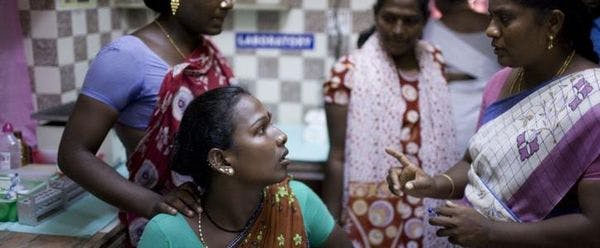Mettre l’accent sur les populations clés touchées par le VIH : un investissement réfléchi pour de meilleurs résultats
Dans un contexte où les ressources sont limitées, la prévention, le traitement et les soins relatifs au sida doivent se centrer sur des investissements plus judicieux soit des programmes pouvant avoir l’impact le plus important pour mettre fin à la transmission du VIH et enrayer l’épidémie. Pour en savoir plus, en anglais, veuillez lire les informations ci-dessous.
Abonnez-vous à l'Alerte mensuelle de l'IDPC pour recevoir des informations relatives à la politique des drogues.
In an era of limited resources, HIV prevention, care, and treatment efforts need to focus on the smartest investments. This means investing in programmes that can have the greatest impact in halting HIV transmission and turning back the epidemic. From a public health perspective, the effective use of resources requires focusing on key populations who have the highest level of HIV infection and tackling the barriers that discourage and prevent them from accessing health systems and services. These populations are broadly defined as sex workers, men who have sex with men, transgender people, and people who inject drugs.
As the world gathers at the 20th International AIDS Conference (AIDS 2014) in Melbourne, Australia, July 20–25, 2014, we have an excellent opportunity to share how investing in evidence-based strategies can change the trajectory of the epidemic once and for all.
We know what works to prevent HIV acquisition and transmission among key populations and how to link these groups to HIV treatment and retain them over time. Yet, in reality, sex workers, men who have sex with men, transgender people, and people who inject drugs are often unable to find and access respectful and high-quality HIV services. Limited systems capacity, stigma and discrimination, violence, discriminatory laws, harmful gender and other social norms, exclusion from meaningful input into programmes, and lack of government support to scale up and sustain current donor-supported services for key populations remain persistent obstacles.
Programmes for key populations are especially weak and fragmented in sub-Saharan Africa, where the focus has primarily been on curbing the epidemic among the general population. Recent efforts to provide HIV services for key populations in the region have encountered new barriers. State-sponsored attacks and deeply discriminatory laws prohibiting same-sex relations in Nigeria and Uganda further exacerbate the many challenges already facing key populations in accessing HIV prevention and care.
Read the full article.
Keep up-to-date with drug policy developments by subscribing to the IDPC Monthly Alert.
Sujets
- Inclusion sociale
- Action policière
- Droits humains
- VIH/Sida
- Réduction des risques
- Genre
- Justice pénale
- Participation de la société civile
- Accès aux médicaments sous contrôle
- Santé et réduction des risques
- Décriminalisation, réglementation et réforme
- Développement et environnement
- Violence, action policière et sanctions
- Droits humains et justice sociale
Régions
Profils associés
- The Lancet
